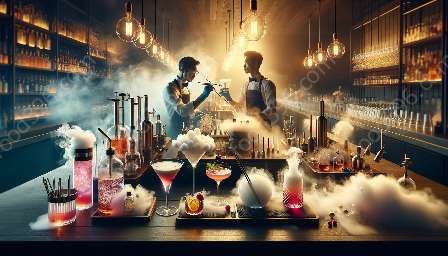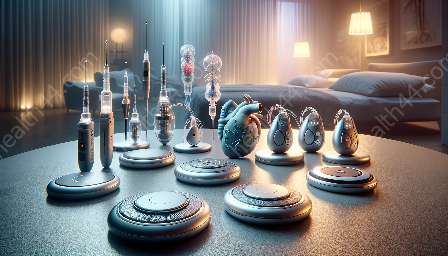Molecular cocktails have taken mixology to a whole new level, where science meets art. One of the most exciting aspects of molecular mixology is foam formation in cocktails. This innovative technique creates visually stunning and unique beverages that tantalize the senses.
The Science Behind Foam Formation
Understanding the science behind foam formation is essential to mastering the art of molecular cocktails. Foam in cocktails is typically achieved through the use of stabilizers, emulsifiers, and aeration techniques. Stabilizers, such as agar agar or gelatin, help maintain the foam's structure, while emulsifiers, like lecithin, create the stable bubbles that give the foam its texture and mouthfeel.
Ingredients and Techniques
Various ingredients and techniques are employed in molecular mixology to create foam in cocktails. Here are a few key elements:
- Lecithin: Lecithin is a natural emulsifier derived from soy or egg yolks. It's often used in molecular mixology to create stable foams with a velvety texture.
- Agar Agar: This vegetarian gelatin substitute is commonly used to stabilize foams in cocktails. It's derived from seaweed and provides a firm, jelly-like consistency to the foam.
- Nitrous Oxide: Also known as laughing gas, nitrous oxide is used to infuse liquids with tiny bubbles, resulting in a delicate foam that enhances the overall drinking experience.
- Spherification: This technique involves transforming liquid ingredients into caviar-like spheres that can be used to top cocktails, creating a visually striking foam effect.
Creating Artistic and Unique Cocktails
Mastering foam formation in molecular cocktails allows mixologists to create drinks that are not only delicious but also visually stunning. The foam adds a sophisticated touch to the presentation and elevates the overall drinking experience.
Pairing Flavors with Foam
When incorporating foam into cocktails, it's important to consider how the flavor and texture of the foam will interact with the other components of the drink. For example, a tart foam may complement a sweet or citrus-based cocktail, while a creamy foam can enhance the richness of a dessert cocktail.
The Visual Appeal
The visual appeal of foam formation in molecular cocktails is undeniable. The delicate layers and unique textures created by the foam add an element of surprise and delight to the drinking experience, making it an art form in itself.
Experimentation and Innovation
Molecular mixology encourages experimentation and innovation, allowing mixologists to push the boundaries of traditional cocktail-making. By exploring foam formation and other techniques, mixologists can create drinks that challenge the senses and expand the possibilities of what a cocktail can be.
The Future of Molecular Mixology
As the field of molecular mixology continues to evolve, foam formation and other molecular techniques will play an increasingly important role in shaping the future of cocktails. The combination of science, art, and innovation promises an exciting journey for both mixologists and cocktail enthusiasts alike.


